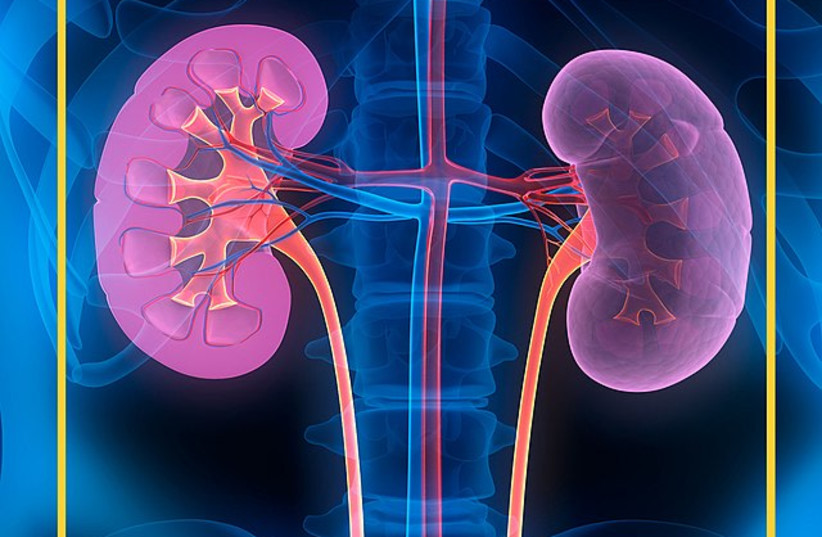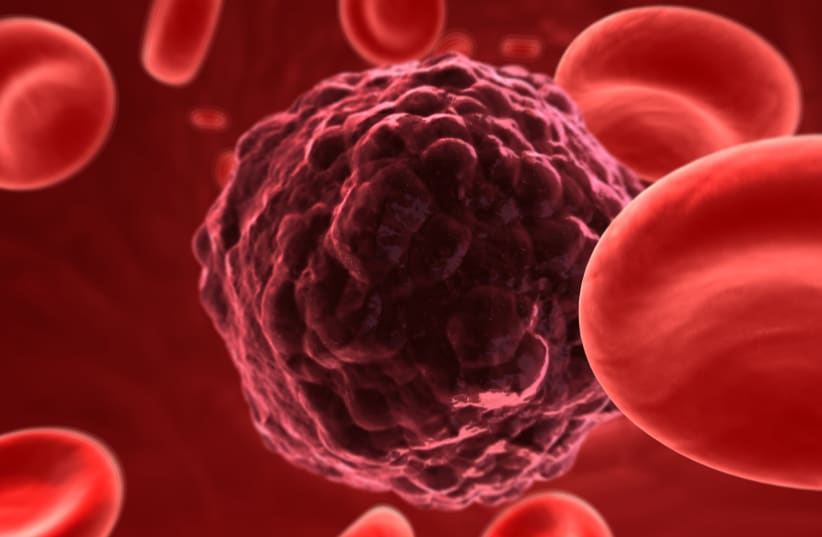He introduced himself as Yuvi Hachiyuchi – Hebrew for “Yuval the smiley guy” – which was not far off. A burly Israeli who works in the urology department at Hadassah Medical Center in Jerusalem’s Ein Kerem, a jokester might be just what the doctor ordered in a department where most interventions start with one’s genitalia.
A bit blunt but, the way I figure it, you need all the hands-on levity you can get when the goal is to insert a stent up one’s ureter. That’s the thin tube that connects the kidneys with the bladder and was the cause of the excruciating pain that sent me to the ER twice and, later, into a regime of aggressive chemotherapy to zap the cancerous tumor that, seemingly overnight, decided to bear down on said tube.
The stent, I was assured, would alleviate the pain. More importantly, it would keep the tumor from collapsing my ureter, leading to irreversible kidney failure.
Hadassah’s outpatient stent clinic is located in a tiny office off a narrow hallway. It mainly deals with kidney stones; ureteral stents allow urine to pass around any such stones that may be blocking the flow.
Unfortunately, there were no appointments available for several weeks to insert the stent.


Well, that wasn’t entirely true – there were no appointments if I wanted it done under general anesthesia, which is offered just once a week.
“Ninety-five percent of our patients do it without sedation,” Yuval assured me, with a knowing and (it seemed to me) slightly glib wink.
“Yeah, well, I’m not most patients,” I chided Yuval, vowing that if a medical practitioner was going anywhere near that part of my body, it would not be with a simple “local.” I wanted to be asleep for the entire procedure. Just wake me up when it’s time to go-go.
Moreover, a study in the journal Urology didn’t support Yuval’s statistics; it found that, of the stent insertions it reviewed, 61% were performed under general anesthesia.
Yuval said he’d call as soon as there was a cancellation.
I was already getting hooked on Percocet, the strong opioid my doctor had prescribed to temporarily treat the suffering from this unexpected event, and I didn’t want to prolong the painkillers. (The Percocet was unrelated to the fentanyl I’d written about previously, when I received anesthesia for a colonoscopy.)
And then, miraculously, just as we were about to leave the clinic, the phone rang: There was a cancellation – in two days’ time. And so, back I went, a few days later, to the isolated urology clinic, with the once-again smiling Yuvi Hachiyuchi.
The main goal – to relieve the pain – was swiftly accomplished, but it was replaced by new lower back pain, which radiated out from the area where the stent had been inserted to encompass both hips and my lower spine.
Bending over – to put on shoes, to pick up something I inadvertently dropped, to carry a grandchild – became a nearly insurmountable challenge.
I was back to popping Percocet again.
Then, some unexpected news arrived: The chemo treatments appeared to be working. The tumor was shrinking! After two months, I could have the stent removed.
When I woke from the anesthesia this time, the back pain was gone. I was ecstatic.
When cancer treatment goes wrong
A week later, though, it was back. Not knowing what could have caused this, my doctor ordered a “kidney mapping” procedure. It revealed the upsetting reason: The stent hadn’t helped after all; the impacted kidney had, in fact, been irreversibly damaged and was now functioning at a paltry 20%.
Why didn’t the stent perform as hoped for? A subsequent CT revealed the cause: There was a new mass next to the kidney. OMG, I panicked – had the cancer returned? It would be extremely rare for that to happen in the middle of treatment.
The exploration continued, as my doctor ordered a biopsy of the mass.
We then began the interminable waiting game for the results from pathology to come in. I was now firmly strapped into the top car of the cancer roller coaster, with nowhere to go but down.
IT TOOK more than two weeks to get an answer: Yes, it was cancer, and it had transformed. I no longer had slow-growing, non-Hodgkin’s follicular lymphoma. I now was sick with DLBCL – or diffuse large B-cell lymphoma. That explained the rapid growth, the pain, the kidney impact, the fevers, the night sweats, everything.
It also set me on the path I’d been dreading: Given my failed chemo, the next step would be CAR-T therapy.
A few days later, the paperwork had been completed, our HMO gave its approval, and I was hooked up to a machine in the bone marrow transplant unit to extract a substantial number of my T-cells – the process is called leukapheresis, in case you want to Google it – to send off to a lab overseas, where the cells will be genetically reengineered, and then reinfused into my body.
One piece of good news: Just two weeks earlier, a brand new CAR-T dubbed Breyanzi was added to the government-approved health basket. It has a success profile similar to that of previous CAR-Ts (including a 35% chance of an actual cure – something no one was talking about when I was first diagnosed in 2018) with a lower level of toxicity.
If all goes according to plan, I’ll be admitted to the hospital for an extended inpatient stay somewhere around Passover time. I’ll be in an isolation room, as my immune system will be completely shot; but the head of the CAR-T division told me she wants me to move around. “Put on your mask and walk around when you’re not connected to an IV,” she advised.
Maybe I’ll visit Yuval. I could use another of his big smiles. I just need to keep him away from any more “breaking and entering” operations.
The writer’s book Totaled: The Billion-Dollar Crash of the Startup that Took on Big Auto, Big Oil and the World has been published as an audiobook. Available on Amazon and other online booksellers. brianblum.com
